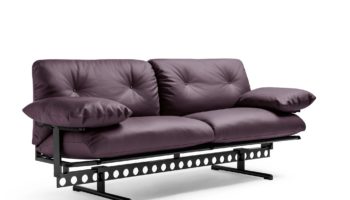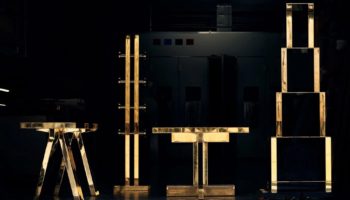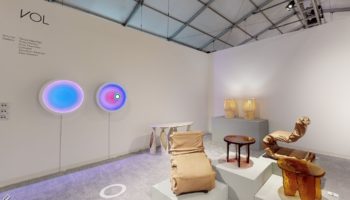Lindsey Adelman’s Ceres is a Forest of Metal and Glass
It may be that we learn the most about nature from our recurrent inability to imitate it. Not that this keeps us from trying. Recent 3rings posts of products that aspired towards duplicating biological processes include the Medusae Pendant Lamp, the Sparks Lighting System, and the Quasi Console. The organic inspiration of these three varies from a translucent jellyfish to a “quasi crystal,” but they all have one overriding characteristic in common: they fail to do what nature does. Just so with the Ceres Collection of Modular Lighting by Lindsey Adelman Studio. This piece, just like last year’s Quasi Console, drew raves at Design Miami for its attempt to replicate the chaotic machinations of a process we’ll never understand.
Ceres. Designed by Lindsey Adelman.
Interconnected Elements with Room to Grow
The process in question is the growth of a forest—that beautiful, dangerous, inscrutable eco-system that defies containment, that bursts the seams of our incredulity. To hear Adelman’s description of Ceres, one would think that her model was the darkly shaded environs of the Black Forest: “Nature in this copse is animate: the spindly rods of trunks and branches bear witness to time’s inevitable passage; metallic barnacle-like forms have grown, as have variously shaped thorns (some precariously sharp) and bronze chestnuts, water chestnuts, acorns and twigs.” Since I was born and bred out West, this doesn’t sound like any forest I’ve encountered, but having spent just a few months recently in the dense undergrowth of Western North Carolina, I can appreciate that Ceres might pass muster as a proto-forest of the East.


The idea behind Ceres is to both celebrate and quantify nature’s unrestrained and unceasing duplications, and if this process also intimates the “threatening possibility of nature gone awry,” so much the better. In order to navigate this precarious terrain, Adelman employs machine-cast metal rods and joints (some lightly dusted with gold, others featuring a tinge of bronze), chromatic linear glass lights, and the occasional shaft of real wood. Curved appendages of wood and metal create Ceres’ haphazard accoutrements of chestnuts, acorns, thorns, and twigs.
Of course, Ceres can never take the place of the real thing, but it has one advantage over the wildest or tamest of forests: its modularity allows its elements to function individually. This is in stark contrast to an actual forest, whose trees, once felled, are but pale reflections of the original form. The several chandeliers, sconces, and floor lights that constitute Ceres can be installed separately or in numerous collaborative incarnations. This flexibility promises the fulfillment of a great aphorism by Alvar Aalto—even for those whose daily commute merely involves moving across the hall from the bedroom to the office: “You should not be able to go from home to work without passing through a forest.”




Leave a Reply